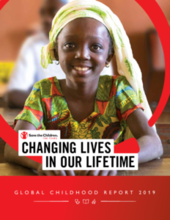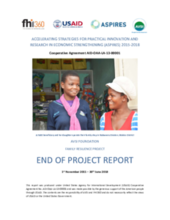Demographic Data
|
Sources: World Bank, UNICEF, UNDP HDR 2015, DHS 2014 |
Displaying 6821 - 6830 of 14403
In commemoration of its founding 100 years ago, Save the Children is releasing its third annual Global Childhood Report to celebrate progress for children.
This briefing paper reports on the lessons learnt from a process evaluation of the child protection component of the Global Fund’s Young Women and Girls (YWG) programme, a multi-pronged HIV prevention programme targeting young women and girls implemented in 10 districts in South Africa.
By age 16 the attainment of most children in or on the edge of out of home care has fallen well behind the average for their age. This paper uses the English National Pupil Database to examine how much of this falling behind occurs before the age 7, and how any subsequent decline relates to time in care as against time outside it.
The aim of the article was the analysis of the problem of speech development in care and educational institutions and family-run children’s houses in Poland.
In this study, the authors analyzed the literature on foster care in Poland and conducted a narrative questionnaire with an educator who simultaneously holds the responsibility for teaching youth in foster care autonomy in order to identify factors that affect educational and vocational plans that foster care charges have.
The purpose of this toolkit is to guide participatory, national level analyses of the social service workforce.
This module is the third part of the Parenting without Violence Bronze Course. The module identifies concrete ways to integrate Parenting without Violence into your work.
This module is the second part of the Parenting without Violence Bronze Course. It focuses on the course's second learning outcome by sharing more about HOW Parenting without Violence works.
This course is designed for participants to gain a basic understanding of the Parenting without Violence common approach in order to be able to promote its use.
This report describes the FARE project - a subproject of ASPIRES that sought to develop evidence and programming guidance for matching contextually appropriate economic interventions with specifically targeted households to reintegrate separated children into families and prevent unnecessary separation of children from their families - and summarizes achievements, challenges, and learning.






